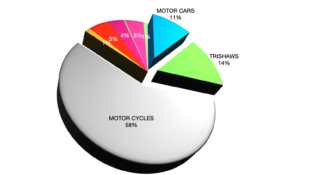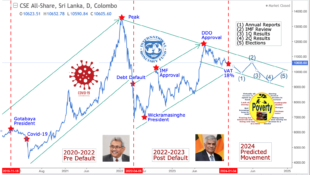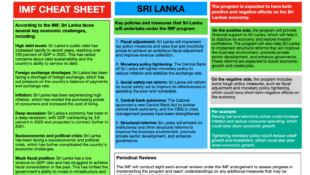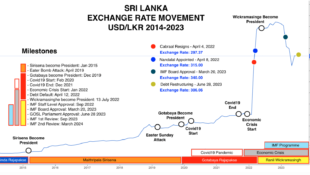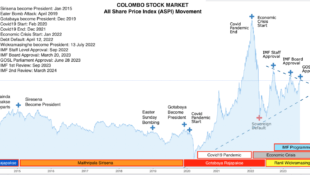We all care about the prices of the goods and services that we buy. It also matters to us how much prices change over time. And the economy tends to work best when prices are relatively stable. Inflation is at the heart of these issues. But what is it exactly? And what are the reasons for differences in inflation rates across countries and over time?
The next three sections try to answer these questions. Section 1.1 introduces the concept of inflation, Section 1.2 explains cross-country differences in inflation rates and Section 1.3 looks at inflation over time. Each section includes interactive charts that allow you to learn more about inflation statistics.
1.1 What is meant by inflation?
Inflation is a key phenomenon in the economy. But what is it? It is all to do with money and prices.
Each product in the market has a price, which is expressed in money. Without money, products would have to be exchanged for other products based on their “real value”. The real value of a product, also called its relative price, would thus be defined in terms of other products (e.g. a loaf of bread might be exchanged for – i.e. equivalent to – two litres of milk). Money serves as the “unit of account” that allows the real value of every product to be expressed at its “nominal price”. When we talk about prices in the economy, we are referring to nominal prices.
Prices of products can change over time, as both supply and demand change. In the case of supply, a good harvest increases the supply of corn and its price may decrease, while a bad harvest leads to scarce supply and rising corn prices. In the case of demand, fashions and consumption trends increase demand for popular brands and products, which may drive up their prices, while the prices of less popular products may fall.
As well as supply and demand, the amount of money in circulation also has an impact on prices. The greater the amount of money circulating in the economy, the higher the risk of wide-ranging increases in prices. This would change the general price level in the economy. And that is precisely what inflation is about, namely changes in the general price level.
Inflation is the general increase in the overall price level of goods and services typically bought by citizens (or “households”, to use the statistical term). It is measured as the average price change over a given period of time for a basket of goods and services that are typically bought in the economy. In the euro area, it is measured as changes in the Harmonised Index of Consumer Prices (HICP) compared with the same period one year earlier (“year-on-year” changes). See Chapter 2 for details on the HICP.
1.1.1 Why does inflation matter?
Inflation affects us all, because increases in the general price level mean that the value of money decreases. In other words, you need to pay more money than before to buy the same products and services. High inflation is usually bad for individual citizens (or households) because it erodes their “purchasing power”, but it is also harmful for the economy as a whole and can reduce economic activity. Society also suffers because high inflation can increase inequality. Households on low or fixed incomes are often hit hardest because they are less likely to safeguard themselves against inflation.
But falling prices and “negative” inflation rates are not good either. The opposite of inflation is deflation, which is a sustained and general fall in the overall price level. This is just as harmful and costly to the economy as inflation. Continuously falling prices create a vicious circle for the economy. If we expect prices to fall, we tend to postpone today’s purchases to take advantage of lower prices tomorrow. And if everybody does this, the economy could grind to a halt. If businesses are not able to sell their products and services, they may need to lay off staff. When people lose their jobs, they spend even less.
Stable prices are therefore best for the economy, and this is why the ECB and other central banks have the task of maintaining price stability. However, price stability does not mean that prices do not increase at all. Rather, it means a positive but low inflation rate, with small, gradual increases in the general price level.
Price increases should be small enough not to create problems for people and businesses but large enough to create a sufficient buffer for the economy against deflation. For instance, in a severe downturn – what experts call a recession – inflation tends to fall as the economy contracts. And if inflation is already too low when a recession hits, there is a risk that it will fall below zero. In addition, positive but low inflation acts as a buffer for small measurement uncertainties. Hence, by aiming for slightly positive inflation, central banks have a safety margin against deflation.
1.1.2 Inflation statistics
Individual goods and services – and groups of goods or services – have different inflation rates. For an overview of the increase in the general price level, inflation is therefore measured using a shopping basket containing the goods and services typically bought by households.
For example, in March 2022 the euro area inflation rate for “food and non-alcoholic beverages” was 5.7% and the rate for “clothing and footwear” was 2.1%. The overall inflation rate in the euro area was 7.4% in the same month.
You can use the interactive visuals to see the inflation rate for your country and for each category of goods and services. You can also compare inflation rates for different countries and categories.
 would enable you to enjoy an array of other services such as Member Rankings, User Groups, Own Posts & Profile, Exclusive Research, Live Chat Box etc..
would enable you to enjoy an array of other services such as Member Rankings, User Groups, Own Posts & Profile, Exclusive Research, Live Chat Box etc.. 
 Home
Home










